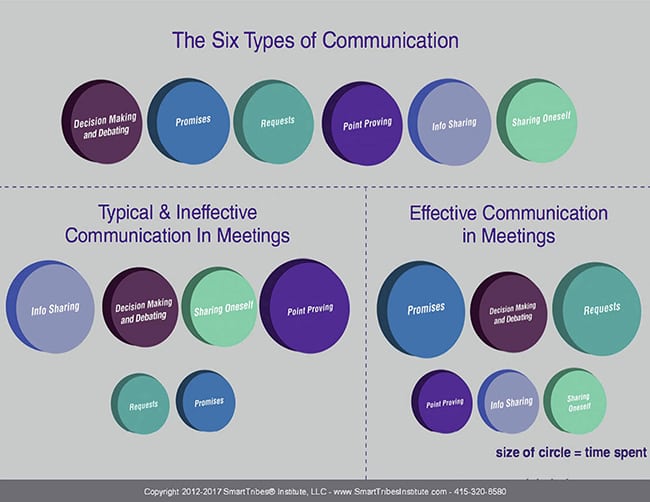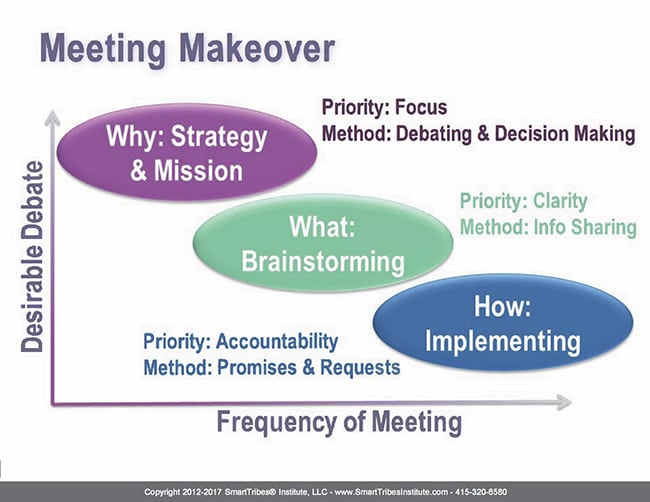
Featuring case studies and proven techniques, Power Your Tribe provides a set of powerful neuroscience-based tools to help managers identify emotions, release resistance, end isolation, focus on outcomes, and course-correct for continued success.

*As originally seen on Forbes.com
Do you hate meetings? How many times have you sat in a meeting knowing this all could have been handled in an email, phone call or text? Having inefficient meetings is costly. They waste time that could have been spent focusing on high-value activities and moving the needle. Think about how much could be accomplished and how much closer you could move towards your goals if your time was spent wisely as opposed to sitting in endless, inefficient meetings.
Meetings are the thing that everyone loves to hate, but they don’t have to be. Imagine what it would mean for you and your team if we could do meetings more effectively.

Are you wasting precious time in useless meetings?
When we are in the meeting, we want to make decisions. When we get out of the meeting, we want to be executing. To achieve this goal, communication is key.
Only two of these drive results: requests and promises.

Only 2 of the 6 types of communication drive results: requests and promises.
What Makes A Meeting Inefficient?
Have you noticed that your meetings aren’t working or there are just too many of them? Inefficient meetings typically involve the following elements:
Think about your team. What are their most common communication types? Do they communicate appropriately for the time of meeting they are at? These are huge factors in the difference between conducting inefficient meetings and smart meetings.
Are you ready to have meetings that are streamlined with high follow through?
Start Having Smart Meetings
Effective communication creates an environment where smart meetings are the norm. Requests and promises to honor those requests, some lively debate and decision making are present and create the momentum to move the needle. How is this accomplished?
Successful meetings always have an agenda and intention and ensure our team doesn’t feel that they are wasting their time. Making meetings matter locks in the desired outcome.
Make Meetings Matter

Makeover your meetings so you’re optimizing your time.
We need the results and priority of our meetings to create intrinsic motivation towards achieving a common goal.
The Net-Net
Are you ready to stop having stupid meetings and start reaping the benefits of smart meetings?
_________________________________________________________________________________________________

Featuring case studies and proven techniques, Power Your Tribe provides a set of powerful neuroscience-based tools to help managers identify emotions, release resistance, end isolation, focus on outcomes, and course-correct for continued success.
_______________________________________________________________________________________________________



